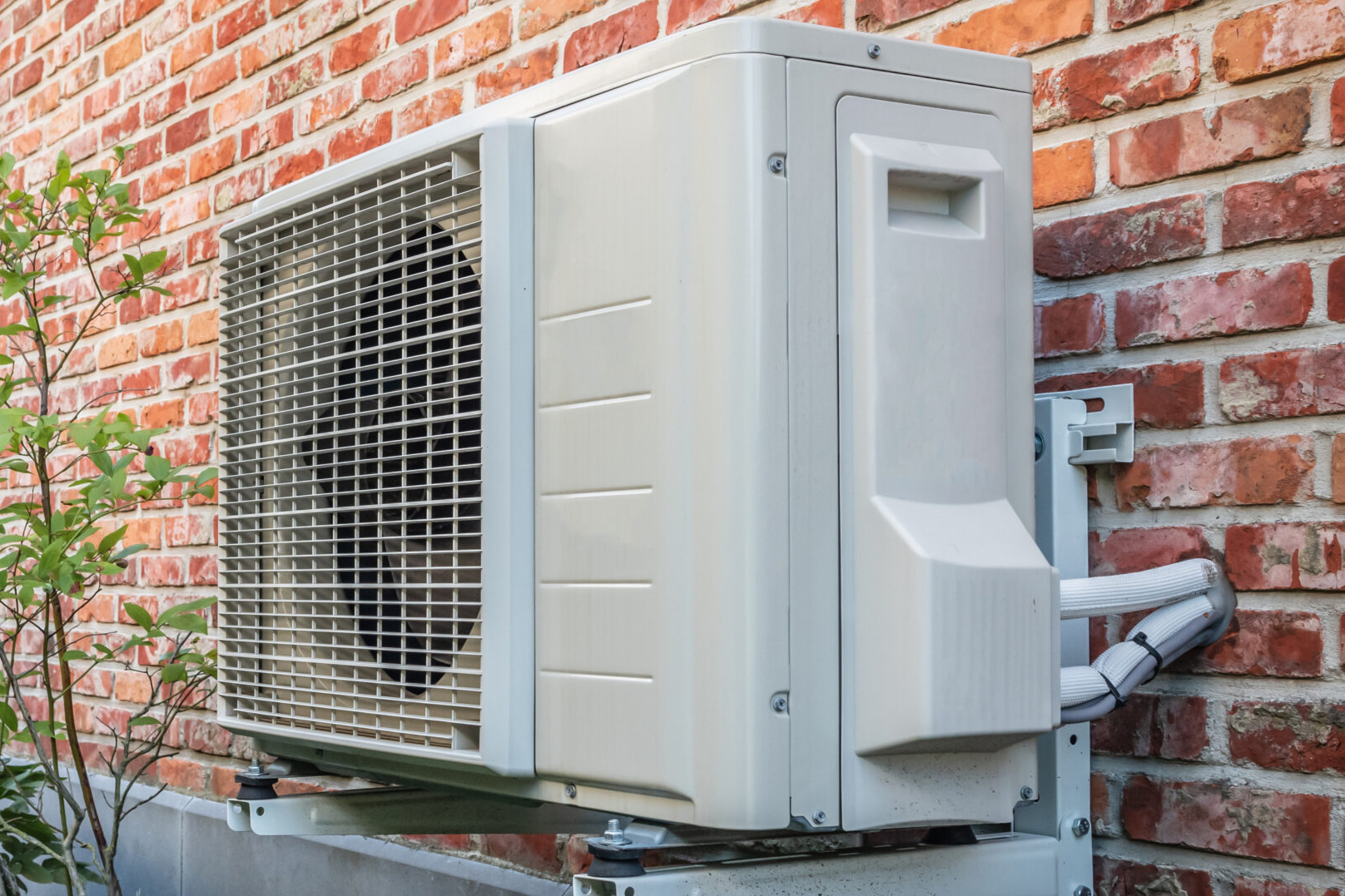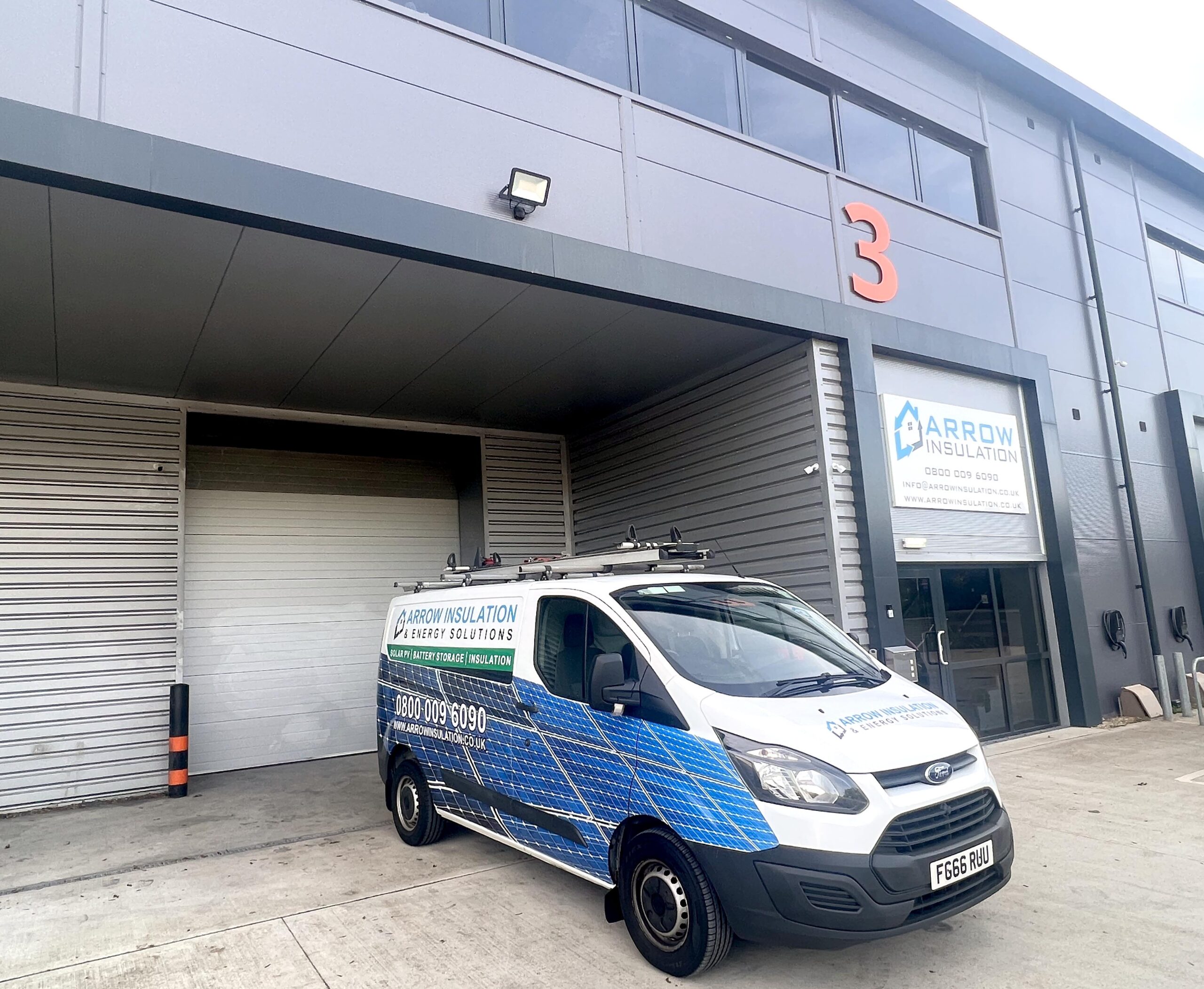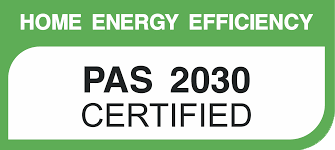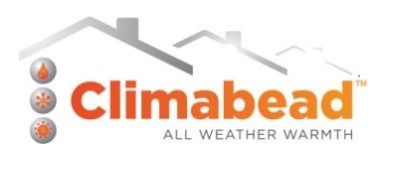Air Source Heat Pumps
Air source heat pumps harness the principle of heat transfer to operate effectively. It's remarkable to note that even at temperatures as low as -18°C (0°F), sufficient heat is present in the external air to warm your home.
These pumps draw in air from the surroundings, extract and enhance the heat within it, and subsequently utilise it to circulate hot water throughout your central heating system. Remarkably, this heat can be distributed either as hot water through pipes and radiators or as hot air via a network of ducts and vents.
For an Air Source Heat Pump to be efficient and effective you will also need:
Cavity & Loft Insulation
Without insulation, the heat pump will be working too hard to generate the heat and may never reach temperature and cost more to run without cavity and loft insulation.
Solar and Battery Supply
The heat pump will cos more to run than your current heating supply unless it is offset by using solar to generate energy and battery to store the power for use when the sun goes down
How do air source heat pumps work?
An Air Source Heat Pump (ASHP) system comprises various components, with a crucial element being a liquid known as transfer fluid. This substance captures heat from the external air and channels it into the property.
Central to the system is the heat pump itself, typically located outside the house. Resembling an air conditioning unit or a large box, it functions by drawing in air, operating similarly to an air conditioner or refrigerator with a compressor that adjusts temperature levels.
Another integral part is the heat exchanger, where collected heat is transferred either into air before being circulated indoors or into water for use in a central heating system. Subsequently, the transfer fluid completes its circuit, returning to the start for the process to repeat.
Unlike ground source heat pumps, installing an air source heat pump typically requires minimal construction work. An air-to-water heat pump is usually compact, akin to half of a washing machine placed end to end. The space requirement is comparable to that needed for leaning a moped against a wall. Installation regulations stipulate a minimum distance from neighboring perimeters, varying by region.
Air-to-air systems come in diverse forms and sizes, often mounted on walls or roofs. It's worth noting that both types of ASHP may be subject to planning considerations, particularly in listed properties or conservation areas.
Although ASHP technology has been utilized for years and is popular in Scandinavia, its efficiency remains high, particularly when installed in well-insulated properties. Recent studies indicate ASHPs are over twice as efficient as fossil fuel boilers, even in cold weather. Installation of domestic units typically takes 2-5 days, during which temporary disruption to hot water and heating may occur.
What are the benefits of an air source heat pump
Cost is a pivotal consideration when contemplating an air source heat pump, as it has the potential to significantly reduce your energy expenses, particularly if replacing an oil, LPG, or electric boiler within a modern central heating system.
Various incentives and schemes exist to promote the adoption of air source heat systems. Government initiatives like the Boiler Upgrade Scheme (BUS) offer financial support of up to £7.5k toward upfront costs. This funding aids in transitioning to a modern solution, curbing energy expenditures, and shielding against future price hikes and taxes associated with fossil fuel systems.
Another advantage is the reduction in carbon footprint, provided the new heat pump replaces a conventional gas, LPG, solid fuel, or oil-fuelled boiler system.
Maintenance of a heat pump system proves simpler and more cost-effective compared to traditional central heating setups. Furthermore, air source heat pumps boast easier and less expensive installation compared to complex ground source heat pumps.
Additionally, potential savings may extend to other areas such as reduced insurance premiums, or even the elimination of gas expenses, thereby negating annual standing charges.
With no combustion involved, air source heat pumps offer enhanced safety. Moreover, being emission-free, they may even yield certain health benefits.
Is an air source heat pump right for you?
Before committing to an air source heat pump, consider several important factors.
First and foremost, assess whether you have sufficient space and tolerance for the presence of a sizable unit outside your home. While advancements have made these units less bulky, they still lack aesthetic appeal. Additionally, ensure the pump is strategically positioned for effectiveness, ideally one to two meters away from neighboring properties. Adequate space around the unit is necessary for optimal air intake, making a sun-facing wall with ample clearance ideal.
Efficiency is another critical consideration. Air source heat pumps operate most efficiently in properties with adequate insulation. They excel at maintaining steady temperatures rather than rapidly heating spaces, which is why good insulation is essential. Inadequate insulation can lead to increased energy consumption, particularly with high-temperature heat pumps that require more electricity.
Regarding return on investment, air source heat pumps typically offer substantial savings over traditional heating systems, especially when replacing oil, LPG, or standard electric boilers. While the savings may be slightly lower when transitioning from a modern mains gas boiler, they still present a worthwhile investment.
Unlike conventional heating methods, air source heat pumps pair exceptionally well with underfloor heating systems. Their lower operating temperatures make underfloor heating more efficient than traditional radiators. However, radiators can still be used effectively if properly sized and installed with 15mm pipework

What is the cost and ROI for an air source heat pump?
The cost of a standard air-to-water ASHP system can range from £8k to £16k, depending on factors such as property size, heating demands, and system specifications. This estimate excludes potential subsidies and is subject to variation due to numerous variables.
Factors influencing costs include property size, potential modifications to the central heating system, current demand, and desired system features. Keep in mind that the upfront cost of installation can impact the time it takes to recoup your investment. While it's challenging to determine a precise payback period for a heat pump, your installation provider should offer guidance tailored to your situation.
Considerations also extend to the type of heating system being replaced, its efficiency, and operational costs. Upgrading from an older, less efficient system typically results in greater savings. Additionally, the distribution method of the new system affects efficiency; for instance, underfloor heating is more efficient than conventional radiators.
While air-to-water systems are prevalent in the UK, it's important to note that switching to an ASHP may not be viable on paper if you have a modern gas boiler (less than 5 years old) and microbore pipework
How to install your air source heat pump
Generally, installing an air source heat pump (ASHP) doesn't require planning permission, except in specific cases. For the average house, installation falls under 'permitted development,' although adherence to general building regulations is still necessary. However, complexities arise for properties with additional statuses such as Grade 2 Listed or English Heritage status, or when traditional installation isn't feasible.
In cases involving heritage or conservation concerns, it's advisable to consult the relevant planning department. If an alternative installation plan is required due to space constraints or height restrictions, it's best to discuss options with your supplier or engineer.
Regardless of the approach, ensure proper certification for your system to benefit from schemes like the Boiler Upgrade Scheme (BUS). Certification requires accreditation with the Microgeneration Certification Scheme, which you can verify through our database of reputable installers.
Beyond legal and planning considerations, practical and aesthetic aspects also come into play. ASHPs may not be the most visually appealing, so choose one that aligns with your preferences since you'll be living with it for years. Noise is another factor, although modern technology offers near-silent options at a premium price. Make sure to inquire about noise levels and available brands/models from your installer.
Infrastructure is another crucial consideration. Prioritize insulation to maximize system efficiency and minimize heat loss. Upgrading pipework and radiators may also be necessary, as ASHPs typically work better with larger diameter pipes compared to microbore pipes common in gas central heating systems. Expect a few days of disruption during installation, and plan accordingly for potential downtime without central heating





















